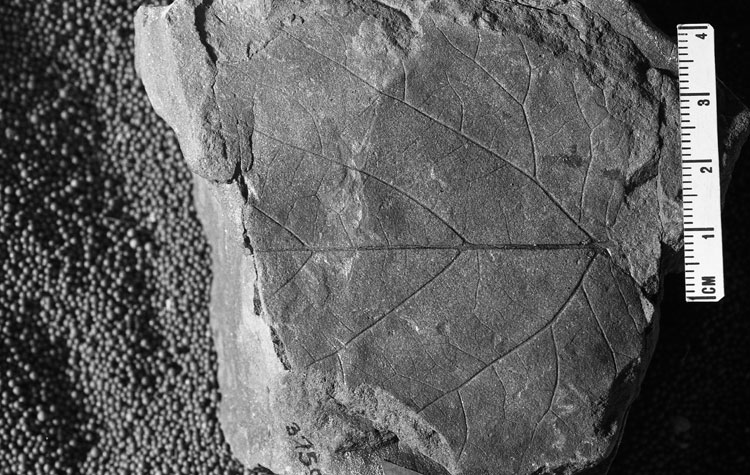Locality
From Hollick (1930) (p. 65)
Yukon River, north bank, about 1 1/2 miles above Williams mine (original No. 36); collected by W . W. Atwood and H. M. Eakin in 1907 (lot 4642)."
From Hollick (1930) (p. 65)
"Leaf ovate or oblong, slightly asymmetrical, with a broad, shallow, cordate base; margin triangular-dentate above, entire below; nervation pinnate-tripalmate, craspedodrome; secondary nerves widely spaced, subopposite, leaving the midrib at angles of about 40°
and 45°; lateral primaries opposite, suprabasilar at a distance of 2 millimeters from the base, unequal in length, leaving the midrib at obtuse angles of divergence, slightly flexed or bent at a distance of about 1.3 centimeters from the midrib, thence ascending more obliquely, irregularly branched on the under sides; basilar veinlets one on each side, extending close to and following the curve of the margin."
Remarks
From Hollick (1930) (p. 65)
"This species resembles Populites lancastriensis (Lesquereux) Lesquereux (1874) (p. 58, pl. 3, fig. 1, [=Populus lancastriensis Lesquereux, Am. Jour. Sci, 2d ser., vol. 46, p. 93, 1868]) very closely, especially the specimen depicted by Lesquereux (1893) (p. 12, pl. A, fig. 4) from the Dakota sandstone of Minnesota. The asymmetry of our leaf, however, is more pronounced than in Lesquereux's figure, and the margin is more distinctly dentate.
As in the other Alaskan species of the genus, the secondaries on one side of the midrib (the right side in our specimen) and the corresponding lateral primary are longer and diverge from the midrib at more acute angles than those on the opposite side, indicating that the apex was more or less oblique."
